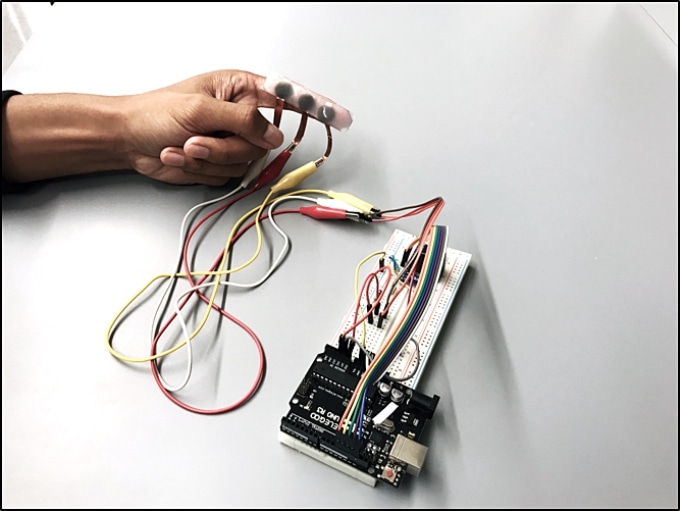Mar 13 2019
An interest in movie technology that displayed robots performing self-repair using a liquid formula has motivated a Purdue University professor to make his own inventions—which are now helping to guide the way for developments in self-powering devices like consumer electronics and defense innovations.
 A Purdue University team created wearable technology to convert mechanical energy into electrical energy. (Image credit: Purdue University)
A Purdue University team created wearable technology to convert mechanical energy into electrical energy. (Image credit: Purdue University)
The team from Purdue, headed by Wenzhuo Wu, the Ravi and Eleanor Talwar Rising Star Assistant Professor of Industrial Engineering, has developed wearable technology to transform mechanical energy into electrical energy.
Our work presents an important step toward the practical realization of self-powered, human-integrated technologies.
Wenzhuo Wu, Ravi and Eleanor Talwar Rising Star Assistant Professor, Industrial Engineering, Purdue University.
The Purdue researchers have developed a triboelectric nanogenerator based on a liquid-metal inclusion, known as LMI-TENG. According to IDTechEx, triboelectric energy-harvesting transducers—devices that help preserve mechanical energy and transform it into power—are estimated to grow into a $480 million market by 2028.
The LMI-TENG can collect and perceive the biomechanical signals from the body and use those to help energize and guide technological devices. The LMI-TENG includes a layer of liquid metal embedded functional silicone sandwiched between two layers of Ecoflex.
The Purdue technology appeared in the February edition of the Journal of Materials Chemistry A, which labeled it as one of 2019’s HOT papers.
We realized that liquid represents the ultimate form of anything that can be deformable and morphing into different shapes. Our technology will enable wearable electronics to take otherwise wasted energy and transform it into energy that can power and control electronic devices and tools used in military defense and consumer applications. Our technology allows the synergistic engineering of TENG components at the material, structural and output levels.
Wenzhuo Wu, Ravi and Eleanor Talwar Rising Star Assistant Professor, Industrial Engineering, Purdue University.
According to Wu, the Purdue technology can be applied to several self-powered innovations for promising technologies, for example, pervasive computing, wearable sensors, human-machine interfaces, advanced health care, user interfaces, robotics, virtual reality, augmented reality, the Internet of Things, and teleoperation.
The study aligns with Purdue’s Giant Leaps celebration, recognizing the university’s worldwide advancements in artificial intelligence and health as part of Purdue’s 150th anniversary. AI and health are two of the four themes of the yearlong celebration’s Ideas Festival, intended to represent Purdue as an intellectual center finding solutions to real-world problems.
Scientists co-ordinated with the Purdue Research Foundation Office of Technology Commercialization to patent the innovation, and they are searching for partners to continue developing it.
Movie technology inspires wearable liquid unit that aims to harvest energy
(Video credit: Purdue University)